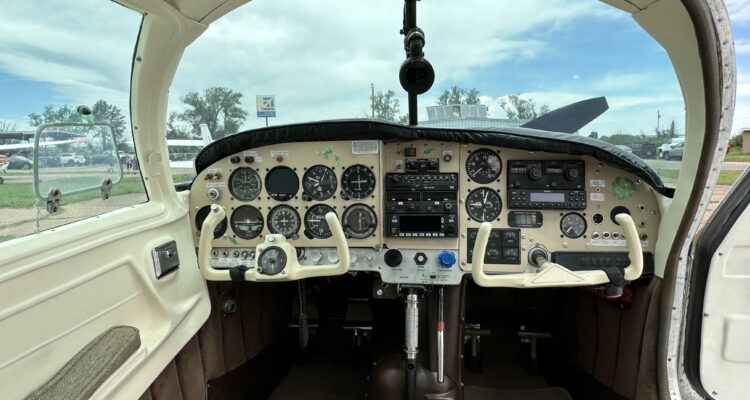Did you know your kitchen table has wings?
RedBull isn’t the only thing that can give you wings. Your couch can, too. You may as well throw out your racecar bed and replace it with an airplane one, ’cause that has wings too. The Flight School at Colorado Springs offers a Private Pilot Ground School that’ll teach you how to turn anything into an airplane cockpit.
What is Chair Flying?
You’re sitting at home in your living room and you reach for the beer checklist on the coffee table and imagine you’re on a beach in the cockpit in Mexico at 9,500 feet. “Top of climb. Cruise checklist. Throttle?” You reach for the arm of the chair and bring the throttle lever back, watching as the RPM needle drops. “Set. Mixture?” You reach for the mixture lever—or rather, where it would be…
This is chair flying—it’s sitting nearly anywhere, practicing the flow of cockpit operations as a means of reinforcing memory items and muscle memory. It’s a free, easy way to practice and improve your in-cockpit skills so that when you fly next, you won’t waste time and money trying to remember what you’re supposed to do next.

Is the weather bad? If the aircraft isn’t flying and isn’t in the shop (and many times, even if it is in the shop) you can drive out to the field and sit in the plane to practice your flows while the aircraft is off—you’re only charged for the time the aircraft is running. Touching the controls while you run through your checklists can help improve your muscle memory!
Wasted Time (And Money)
As flight instructors, something we often experience during a lesson is wasted time on the ground with the engine running. Though we encourage students to memorize checklists and “chair fly” at home to become more familiar with how the flow of tasks in the cockpit feels, we inevitably find ourselves on the fifth, tenth or twentieth lesson watching a student question us as to “what’s next?”
A typical two-hour lesson at any given flight school involves a healthy amount of pre-flight ground discussion, a lengthy preflight inspection, some taxi practice and a lengthy run-up, a flight to the practice area, a lesson or two on some maneuvers, the flight back to the airport, the taxi to the ramp, a post-flight inspection and tie-down and a post-flight discussion of what was covered. Often, less than half of the lesson is spent in the air.
Chair Fly At Home & Actually Fly At School
Let’s be clear: speed is an enemy of safety. We’re not advocating for mindlessly accelerating pre-flight safety checks. What we are recommending is showing up to lessons better-prepared to accomplish tasks you can learn to do on the ground with appropriate expediency.
Slow is smooth and smooth is fast.
A talking seal
Any student will spend plenty of time on the ground with the engine running learning to accomplish a proper run-up. But our Private Pilot Ground School teaches students how to study checklists so they’re ready to actually fly through their training.
With thorough preparation, sufficient chair-flying and a solid foundation of knowledge from ground school, there’s no reason anyone shouldn’t be able to start, taxi and run-up and airplane in just a few short minutes. By reducing the amount of time spent on easily-memorized and easily-practiced start-up and run-up flows, more time can be spent in the air, learning how to actually fly.
Do The Math!
Even if you only save 0.1 hours per lesson by learning to do your pre-taxi and run-up in a more orderly fashion (you’ll likely save closer to .3 or .4, especially early on), you’ll save 2 or 3 full hours of flight time in the course of your Private Pilot training alone—that’s two entire lessons worth of time and well over $400 in savings on aircraft rental and instructor time. Now do the math for the 250 hours you’ll spend in the cockpit training to become a commercial pilot…






